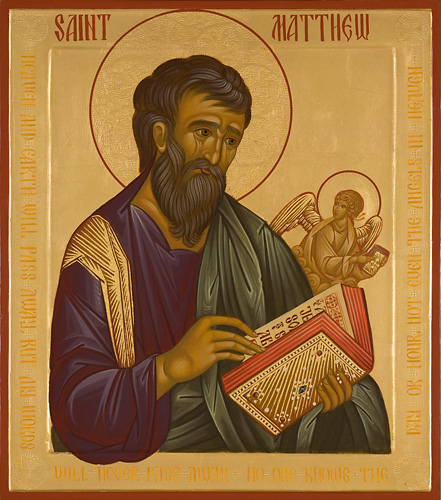
Matthew 21:5 “Say to the daughter of Zion, ‘Behold your King is coming to you, Gentle, and mounted on a donkey,
Even on a colt, the foal of a beast of burden.’”
Introduction:
There is no better way to acquaint oneself with Jesus than through reading and studying the four gospel accounts.
Today's post will attempt to expound a brief history and the importance of Matthew's Gospel with respect to knowing Jesus better. We will also offer an outline for the reader's use in the event the reader chooses to read the Gospel of Matthew.
How we see Jesus as God and man in Matthew
We find Him exercising perfect, human compassion and mercy on the children in Matthew 18 and teaching with Divine authority in all of His sermons. In equal measure, Jesus' Deity is also asserted in places such as by the title "Son of God" (4:3,10; 8:29; 16:16; 27:43,54) and by His proclamations (i.e in His depiction as being the "Son of Man" in Matthew 24-25 and His claim of "having all authority" in Matthew 28:18.
An outline of Matthew's Gospel
Certainly the following outline is not intended to be detailed. We mainly want to get the overall flow of Matthew's Gospel.
I. Preparation and arrival. Mt 1:1-3:12
II. Public Ministry. 3:13-26:46
III. Passion/crucifixion. 26:47-27:66
A. Trials. 26:47-27:32
B. Crucifixion. 27:33-27:36
C. Burial. 27:57-66
IV. Resurrection & appearances. Mt 28
Concerning an outline of Matthew that captures the key theme of "king", we can offer the following:
King's birth. Matthew 1-2
King is announced. Mt 3:1-12
King's public ministry. Mt 3:13-26:19
King's table. Mt 26:20-35
King's agony. Mt 26:36-46
King's cross. Mt 26:47-27:66
King's victory. Mt 28:1-20
Why Matthew was written and how the early church regarded it
According to New Testament scholar David Alan Black, Matthew was a manifesto that asserted the right of the Christian church to exist alongside the Jews in Jerusalem. For the first 30 or more years (taking Jesus' crucifixion and resurrection to had occurred in 33 A.D) of the Christian movement, Matthew (taking a date of 50-70 A.D) for its composition, Matthew's Gospel functioned well for the early church in and around Jerusalem. Early church leaders, called "the church fathers", wrote commentaries and Christian writings that people can study in understanding the first few centuries of the Christian church. One of those early Christian leaders, Irenaeus of Lyons, wrote the following in his work "Again Heresies", 3.1.1-4, near the end of the second century:
"Now Matthew published among the Hebrews a written gospel also in their own tongue, while Peter and Paul were preaching in Rome and founding the church. But after their death, Mark also, the interpreter and disciple of Peter, himself handed down to us in writing the things which were preached by Peter and Luke also, who was a follower of Paul, put down in a book the gospel which was preached by him. Then John, the disciple of the Lord who had even rested on his breast, himself also gave forth the gospel, while he was living in Ephesus in Asia."
King's birth. Matthew 1-2
King is announced. Mt 3:1-12
King's public ministry. Mt 3:13-26:19
King's table. Mt 26:20-35
King's agony. Mt 26:36-46
King's cross. Mt 26:47-27:66
King's victory. Mt 28:1-20
Why Matthew was written and how the early church regarded it
According to New Testament scholar David Alan Black, Matthew was a manifesto that asserted the right of the Christian church to exist alongside the Jews in Jerusalem. For the first 30 or more years (taking Jesus' crucifixion and resurrection to had occurred in 33 A.D) of the Christian movement, Matthew (taking a date of 50-70 A.D) for its composition, Matthew's Gospel functioned well for the early church in and around Jerusalem. Early church leaders, called "the church fathers", wrote commentaries and Christian writings that people can study in understanding the first few centuries of the Christian church. One of those early Christian leaders, Irenaeus of Lyons, wrote the following in his work "Again Heresies", 3.1.1-4, near the end of the second century:
"Now Matthew published among the Hebrews a written gospel also in their own tongue, while Peter and Paul were preaching in Rome and founding the church. But after their death, Mark also, the interpreter and disciple of Peter, himself handed down to us in writing the things which were preached by Peter and Luke also, who was a follower of Paul, put down in a book the gospel which was preached by him. Then John, the disciple of the Lord who had even rested on his breast, himself also gave forth the gospel, while he was living in Ephesus in Asia."
Closing thoughts: what Matthew's Gospel means for us today
Matthew's Gospel is vital in our understanding of Jesus. He as King would figure prominently throughout the remainder of the New Testament. Paul speaks of Jesus being "highly exalted" in His ascension which took place 40 days after His resurrection. The unity of the Old Testament's anticipations of Jesus' arrival is woven into what would be His earthly life, ministry, death and resurrection. The powerful sermons and touching scenes of Jesus healing people shows us a King who was (and is) authoritative but also compassionate. The superscription above the cross reminds us that Jesus was ever as much King on the cross as He is now in Heaven as the exalted God/man. Finally, His Kingly Great commission urges His church to fulfill the calling to which He gave her to preach the Gospel until He returns.
